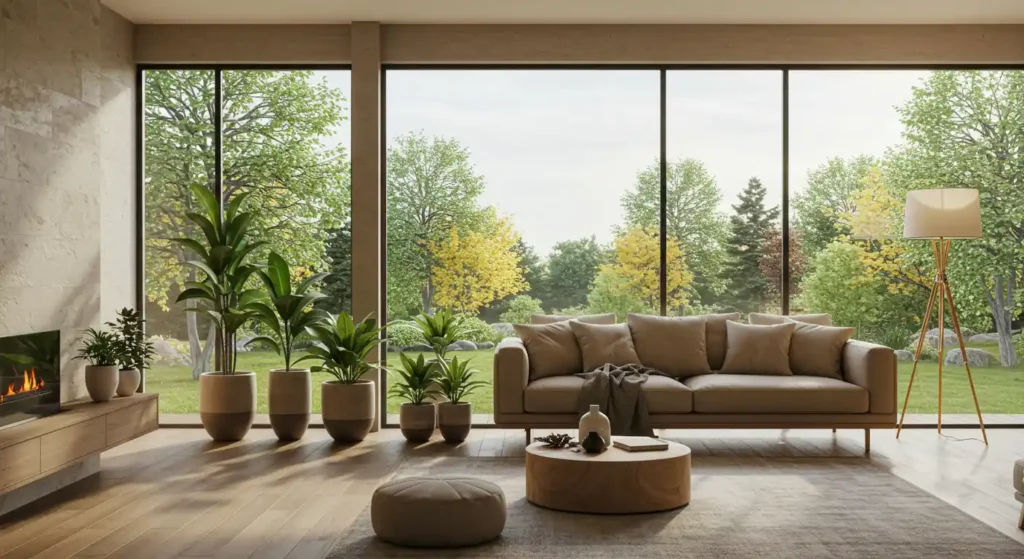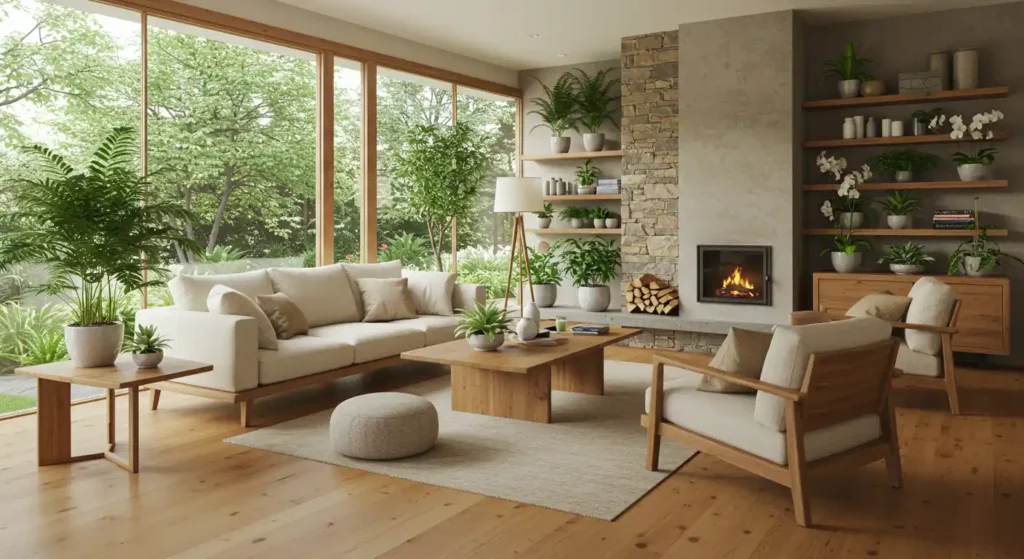But what exactly is biophilic design, and why is it becoming such a buzzword in modern homes, offices, and public spaces?
Sydney Architectural Construction is a trusted Sydney-based building company specialising in high-quality residential and commercial design, renovation, and construction solutions. Let us walk together and see what it means, how it works, and why more people embrace it to enhance their spaces and well-being.
Understanding Biophilic Design
The word “biophilia” means “love of nature.” Biophilic design is the practice of connecting people with nature in the spaces where they live, work, and play.
It’s not just about placing a few plants in a room; it’s about creating an environment that reflects the natural world through design, materials, light, and layout.
This approach taps into our innate need to feel connected to nature. It recognises that humans evolved outdoors, not behind screens or under fluorescent lighting—and that reconnecting with nature, even indoors, has powerful effects on our mental, emotional, and physical health.
Key Elements of Biophilic Design
Biophilic design goes far beyond adding greenery. It weaves nature into every part of a space, using a combination of direct and indirect elements:
1. Natural Light
Maximising sunlight through windows, skylights, and reflective surfaces helps regulate our circadian rhythms and uplifts our mood.
2. Plants and Greenery
Indoor plants, vertical gardens, green walls, and outdoor views soften harsh interiors and improve air quality.
3. Natural Materials
Wood, stone, rattan, wool, linen, and other raw, organic materials create a sensory connection to the outdoors.
4. Organic Shapes and Patterns
Curves, flowing lines, and patterns inspired by leaves, waves, and natural forms can create a calming aesthetic.
5. Fresh Air and Ventilation
Good airflow, often with operable windows or cross-ventilation, ensures a healthy indoor climate and mimics being outside.
6. Water Features
The sound and sight of water, through fountains, ponds, or miniature indoor waterfalls, can reduce stress and enhance a feeling of tranquility.

Why Biophilic Design Matters
In a world that is increasingly fast-paced and digital, our need for calm, grounding environments is greater than ever. Biophilic design doesn’t just make spaces look better—it makes you feel better.
Here’s why it’s gaining traction in both residential and commercial design:
Improved Wellbeing
Exposure to natural elements indoors has been linked to reduced stress, improved mood, and better focus. People in biophilic spaces often report feeling more relaxed, energised, and mentally clear.
Increased Productivity
In office settings, biophilic design can boost concentration, reduce fatigue, and even improve creativity. Employees are more relaxed and satisfied and perform better when surrounded by natural features.
Better Sleep and Health
Natural light and improved air quality contribute to better sleep patterns and respiratory health. Bedrooms designed with biophilic principles help support restful, restorative sleep.
Sustainable Living
Biophilic design often goes hand-in-hand with eco-conscious living. You also reduce your environmental impact by choosing natural, sustainably sourced materials and reducing reliance on artificial lighting or climate control.
Biophilic Design at Home: Practical Ideas
You don’t need a full renovation to integrate biophilic design into your home. Here are a few easy ways to get started:
- Add indoor plants in every room, including bathrooms and kitchens.
- Replace heavy curtains with sheer fabrics to allow more natural light.
- Use wooden furniture and linen or cotton textiles to introduce natural textures.
- Create a reading nook near a window with a view of the garden or sky.
- Choose paint colours inspired by nature—think soft greens, warm earth tones, or calming blues.
- Open windows daily to let in fresh air and natural sounds.
- Incorporate artwork or photography that reflects natural landscapes or organic forms.
The Future of Biophilic Design
As cities grow denser and our lives become more technology-driven, the desire to reconnect with nature will only intensify. Architects, designers, and homeowners alike are now rethinking how to design spaces that nourish the human spirit.
Incorporating biophilic design isn’t just a trend—it’s a lifestyle shift. It’s about creating spaces that help us feel more grounded, present, and alive. Whether you’re planning a home renovation, designing a new office, or simply refreshing your interiors, consider how nature can be part of your everyday experience.
Because sometimes, the most powerful design is the one that brings us closer to the world we came from.
Ready to transform your space?
Contact Sydney Architectural Construction today to schedule your consultation and take the first step toward your dream build.

